Trees & Master Plants
Sacred Teachers of Transformation
Master Plants are revered in traditional Amazonian medicine as sacred beings and powerful allies for spiritual and emotional transformation. These trees, shrubs, and herbs are seen as living entities with intelligence and spirit. Often called Doctors or Teachers by Indigenous communities, they are honored for their ability to guide individuals on a journey of
self-discovery, inner alignment, and deeper connection with nature.
At Templo del Tigre, we work with these plants through the sacred practice of the dieta — a retreat process that invites silence, simplicity, and communion with the plant spirit.
Explore the sections below to learn more about how these plants are traditionally experienced.
What Is a Master Plant?
The Dieta Process
Layers of Transformation
Master Plants are traditionally understood to support transformation across multiple levels — physical, emotional, energetic, and spiritual. Within the dieta, many people report that these plants help illuminate patterns, release stored emotions, clear energetic blockages, and cultivate a sense of connection to one’s deeper self.
Through this process, individuals often explore inherited patterns and ancestral imprints, creating space for emotional release and spiritual renewal.
Why Guidance Matters
This work is powerful and deeply personal. While the plant spirit is considered the primary guide, the presence of an experienced traditional healer or curandero is essential for holding a safe container and helping interpret what arises. We strongly recommend working with a trained practitioner, especially when engaging with strong plant allies through dieta.

Master Plants
Abuta
Cissampelos pareira
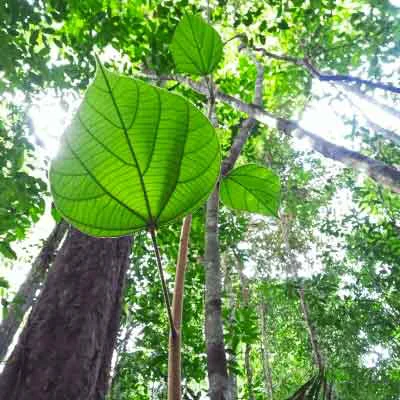
Abuta is traditionally honored in Indigenous Amazonian medicine for its strong connection to women’s health and reproductive balance. Ceremonially, it is associated with soothing menstrual discomfort, supporting recovery after childbirth, and restoring harmony in the womb. It is also respected for its role in easing physical tension, particularly discomfort in the joints and muscles, and is regarded in some traditions as a plant that supports circulation and energetic flow. Often called upon for its purifying qualities, Abuta is seen as a powerful ally for cleansing and aligning the body with nature’s wisdom.
Ajo Sacha
Mansoa alliacea
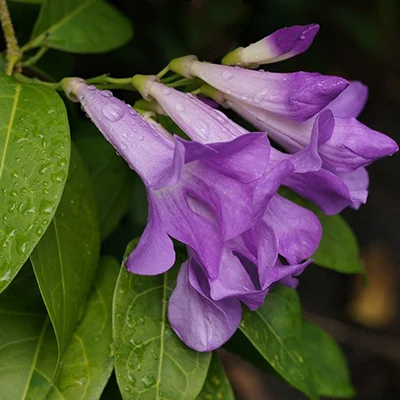
Ajo Sacha, known for its distinctive garlic-like aroma, is highly valued in Amazonian traditions for its detoxifying qualities, believed to support the clearing of toxins and energetic blockages to revitalize the whole being. Spiritually, it acts as a protector, shielding the aura from negative influences and strengthening resilience. Often called the “plant of vocation,” Ajo Sacha helps individuals connect with their true self, enhancing clarity, confidence, and alignment with life’s purpose.
Ayahuma
Couroupita guianensis
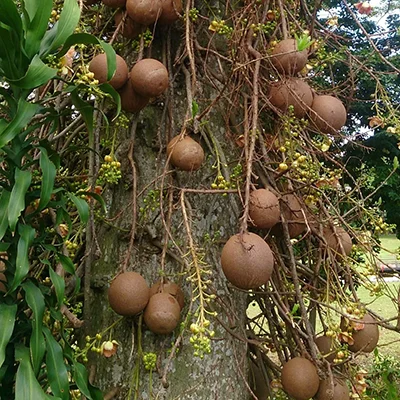
Ayahuma, or the Cannonball Tree, is honored in Amazonian traditions as a powerful protector and teacher. Traditionally used to purify the blood and support resilience, it is also associated with anti-inflammatory, antimicrobial, and anticancer qualities. Spiritually, Ayahuma is a strong shamanic ally, guiding individuals through fear and emotional healing. Its spirit, Sinchiruna, teaches strength through vulnerability and is said to offer “invisibility” in ceremony—helping release the past and foster compassion and clarity.
Bellaco Caspi
Himatanthus sucuuba

Bellaco Caspi is traditionally honored in Amazonian medicine as a potent ally for the skin, muscles, and joints. It is associated with soothing wounds, reducing inflammation, and supporting both physical recovery and lymphatic cleansing. For women, it is used to support reproductive balance, including endometriosis, fibroids, menstrual discomfort, and ovarian imbalances. Spiritually, Bellaco Caspi is linked to ancestral strength, offering grounding, clarity, and the energy of the father archetype—helping establish boundaries, inner authority, and structure. Known to balance masculine and feminine energies, it supports emotional healing, protection, and creative flow.
Bobinsana
Calliandra angustifolia

Bobinsana, often called the “Song of the Amazon,” is cherished as a heart-opening plant that gently nurtures emotional balance, encouraging love, compassion, and a sense of interconnectedness. In traditional Amazonian practice, it is respected for guiding individuals toward emotional clarity and a deeper connection with the world around them. Some traditions also associate Bobinsana with supporting the immune system, enhancing circulation, and easing tension in the body. As a master plant, it is seen as aligning body and spirit, creating space for emotional healing, inner harmony, and spiritual upliftment.
Chiric Sanango
Brunfelsia grandiflora
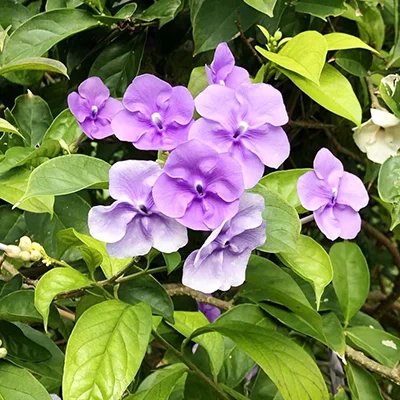
Chiric Sanango is traditionally valued for its role in supporting both physical and energetic well-being. It is associated with relieving discomfort related to rheumatism, arthritis, fever, and other conditions, while promoting bone and joint health, as well as blood cleansing and hormonal balance. Energetically, Chiric Sanango is believed to help clear stagnant energy, support emotional release, and foster inner strength, clarity, and confidence. Known as the “bone doctor,” it is considered to aid vitality and balance on multiple levels. As a spiritual ally, Chiric Sanango guides individuals in facing fears, cultivating emotional resilience, and finding inner calm. It serves as a bridge between physical and subtle realms, inspiring holistic harmony and personal growth.
Chuchuhuasi
Maytenus macrocarpa
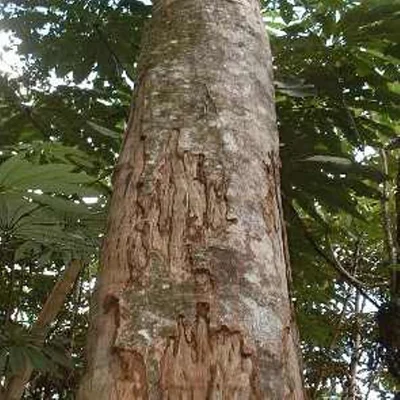
Chuchuhuasi, meaning “trembling back” in Quechua, is traditionally respected for supporting vitality and well-being. It enhances strength, aids joint comfort, and promotes cardiovascular health. Known for its balancing qualities, it encourages hormonal harmony and eases menstrual discomfort. Spiritually grounding and protective, Chuchuhuasi fosters resilience, clarity, and emotional balance. It also supports emotional healing across generations, helping individuals maintain strength, courage, and alignment with core values through life’s challenges.
Tamamuri
Brosimum acutifolium

Tamamuri is traditionally regarded in Amazonian medicine for its purifying and cleansing qualities that support both the physical and energetic bodies. It is associated with anti-inflammatory, analgesic, antibacterial, and antifungal properties in traditional use. Tamamuri is linked with supporting comfort in muscles and digestion, and is respected for its role in promoting vitality and well-being. Energetically, this tree is believed to connect individuals with their ancestors and nature, fostering emotional clarity, healing, and spiritual growth. It is also considered a protector against negative energies.
Tobacco
Nicotiana rustica
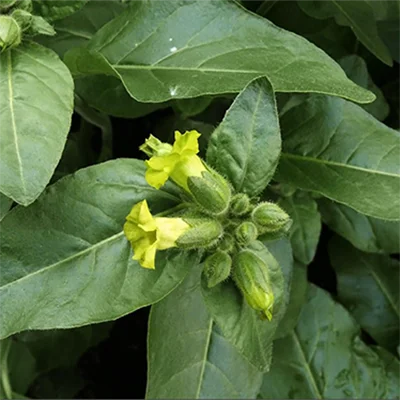
Tobacco is traditionally recognized in Amazonian medicine for its broad benefits. It is associated with anti-inflammatory, antifungal, antibacterial, and antiparasitic properties. Traditionally used to relieve pain, aid digestion, and expel parasites, it is believed to support mental clarity, neurological function, and emotional balance—helping ease fatigue, anxiety, and energetic imbalances. Known as the “Grandfather Plant,” tobacco is deeply respected as a spiritual ally working on physical, mental, and spiritual levels. It is said to connect individuals to the spirit world, offering clarity, vision, dreams, and protection. Traditionally, it is regarded as a messenger plant that carries prayers and intentions, helping strengthen presence and groundedness during ceremonial practice.

